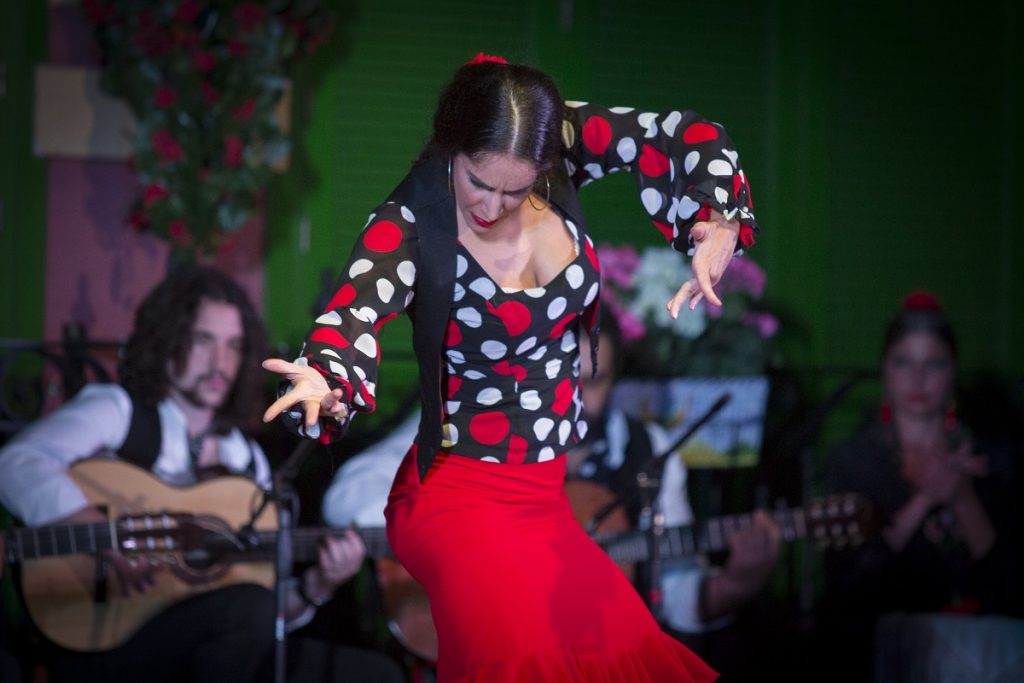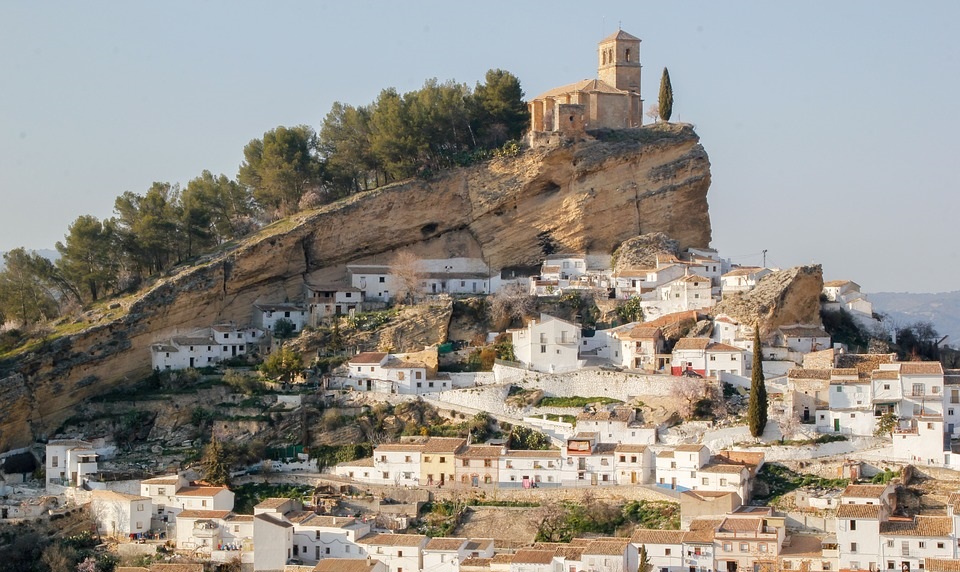
The origin of flamenco in Andalusia is not entirely clear, but the idyll that this art maintains with this land, an idyll that comes from afar. There are those who indicate that flamenco comes from Islamic monochordic songs, while others attribute to the gypsies the introduction of this genre in Andalusian lands.
The gypsies arrived in Spain at the beginning of the fifteenth century and their unique way of understanding life and expressing it, through singing and dancing, did not go unnoticed by society at that time. It is not surprising that, starting in the 18th century, the word ‘flamenco’ began to be used as a synonym for Andalusian gypsy.
And, regardless of who is right or wrong about the origin of flamenco in Andalusia, what is undeniable is the influence that gypsy culture has had on the development and history of flamenco art.
Flamenco has become a benchmark of Andalusian folklore, creating styles that have come to this day. Little by little, this art was attracting attention and taking fame, to the point that the dance and the singing of the private celebrations of the gypsies were transferred to the well-known singing cafés, places where it was performed live, getting in this way that Flamenco will become popular and become a musical genre.
Within the Andalusian community, Seville, Jerez de la Frontera and Granada are key to the origin of flamenco. These cities are considered as cradles of Andalusian flamenco and have been and continue to be a benchmark in and out of Spain.
Proof of this is the great cast of Sevillian, Jerez and Granada Flemish artists who have strolled and walk their talent on stages around the world. Another demonstration of the link that Seville, Jerez de la Frontera and Granada have with this art, is the amount of tablaos or flamenco styles they have, spaces that safeguard the flamenco spirit of this land.
The Cadiz city of Jerez de la Frontera is fundamental in flamenco. Its history is linked to this art, being one of the cities that more dancers, singers and guitarists have given to this artistic discipline. De Jerez was the first singer who has written news, Tío Luis de la Juliana, considered the creator of primitive songs, such as tonás.
Other artists who have left their mark on this art are El Borrico, Tia Añica la Pirriñaca, El Sernita, Terremoto, Chocolate, El Agujeta, El Sordera, La Paquera, Diamante Negro or José Mercé, among many others.
Jerez de la Frontera has also been vital in the evolution of this art. Among the styles that characterize Jerez flamenco, the seguiriyas and bulerías stand out, sticks that have passed into the history of cante with its own label.
The neighborhoods of Santiago and San Miguel, where the bulería is originally from, are enclaves of reference for this city. These suburbs concentrate the greatest number of tablaos and spaces dedicated to the knowledge of the history and essence of Jerez flamenco.
Jerez de la Frontera also keeps the spirit of flamenco alive, through the different recitals, parties and festivals that it celebrates during the year, activities that arouse the interest of experts and lovers from all over the world.
Granada is another place of reference for the history and origin of flamenco in Andalusia. The gypsies settled in the caves of Sacromonte, making the city of the Alhambra one of the cradles of flamenco in Spain. Cante Jondo and ‘duende‘ were born and live in this neighborhood.
The city of Granada played and plays a decisive role in this artistic discipline, especially in flamenco singing. Here was born the style of the zambra, traditional flamenco from Granada, a show formed by dancers, musicians and palmas (patting). Other singing styles that emerged here are the fandangos, the granaína and the media granaína, in addition to the tango of “Graná”.
Between the 18th and 19th centuries, when romantic writers arrived in Granada, the zambra and flamenco emerged as an artistic expression appreciated throughout the world. It was precisely this recognition, which turned flamenco into a discipline with concrete musical form and style, removing it from the intimacy of gypsy folklore.

It was then that the flamenco caves of Sacromonte became famous and became a must for travelers, who visited this suburb to enjoy the purest and most authentic Spanish gypsy culture. This is the reason why, the romantic artists always painted the Andalusians in flamenco dresses, because the gypsies received dressed like this at the doors of the cave.
The Sacromonte from Granada remains the place of flamenco reference in this city and has numerous zambras that hold daily shows. They appear as Chorrojumo, Manolo Caracol or María la Canastera, helped make Granada the flamenco reference that it is today.
Seville and flamenco maintain an idyll that goes back to the beginning of cante jondo. In this city, flamenco is breathed on all four sides, keeping alive this artistic legacy both in emblematic corners, specific spaces, festivals, events and flamenco tablaos.
Within this city, the Triana neighborhood is key in the evolution of flamenco in Seville. This neighborhood saw this art born and growing to the point of becoming the epicenter of flamenco during the 18th and 19th centuries. In fact, numerous artists and masters of cante jondo have been born, grown or soaked in the ‘flamenco customs’ of this neighborhood, such as El Fillo, Naranjito de Triana or Uncle Antonio Cagancho or Esperanza Fernández, among many other singers, guitarists or bailaores who have contributed to the evolution of this Andalusian art.
Given the flamenco activity and creativity that emerged here, it is no coincidence that Triana has her own style of flamenco singing and dancing known as the soleá de Triana.
But it has not been the only contribution to this artistic genre, since other fundamental styles of cante jondo were also forged such as seguiriyas, soleares and tonás. And other festive songs and dances par excellence, such as tangos and bulerías.

While, in the mid-nineteenth century, in the trianero suburb it was sung in the taverns, in the rest of the city of Seville, flamenco acquired public character by performing shows in theaters and singing cafés, places that are the origin of the current tablaos flamingos that dot the city of Guadalquivir.
In Seville, there are multiple spaces where you can enjoy the true spirit of flamenco. Among the places of reference, where to attend a live show, is our tablao. At El Palacio Andaluz we worship true flamenco every day. Almost twenty artists give life to a unique show, a tour of the different flamenco styless, combined with a tribute to the Spanish classic.
As you can see, the origin of flamenco in Andalusia is linked to Seville, Granada and Jerez de la Frontera, cities that are the cradle of this mythical Andalusian art.
© 2024 El Palacio Andaluz. All rights reserved.